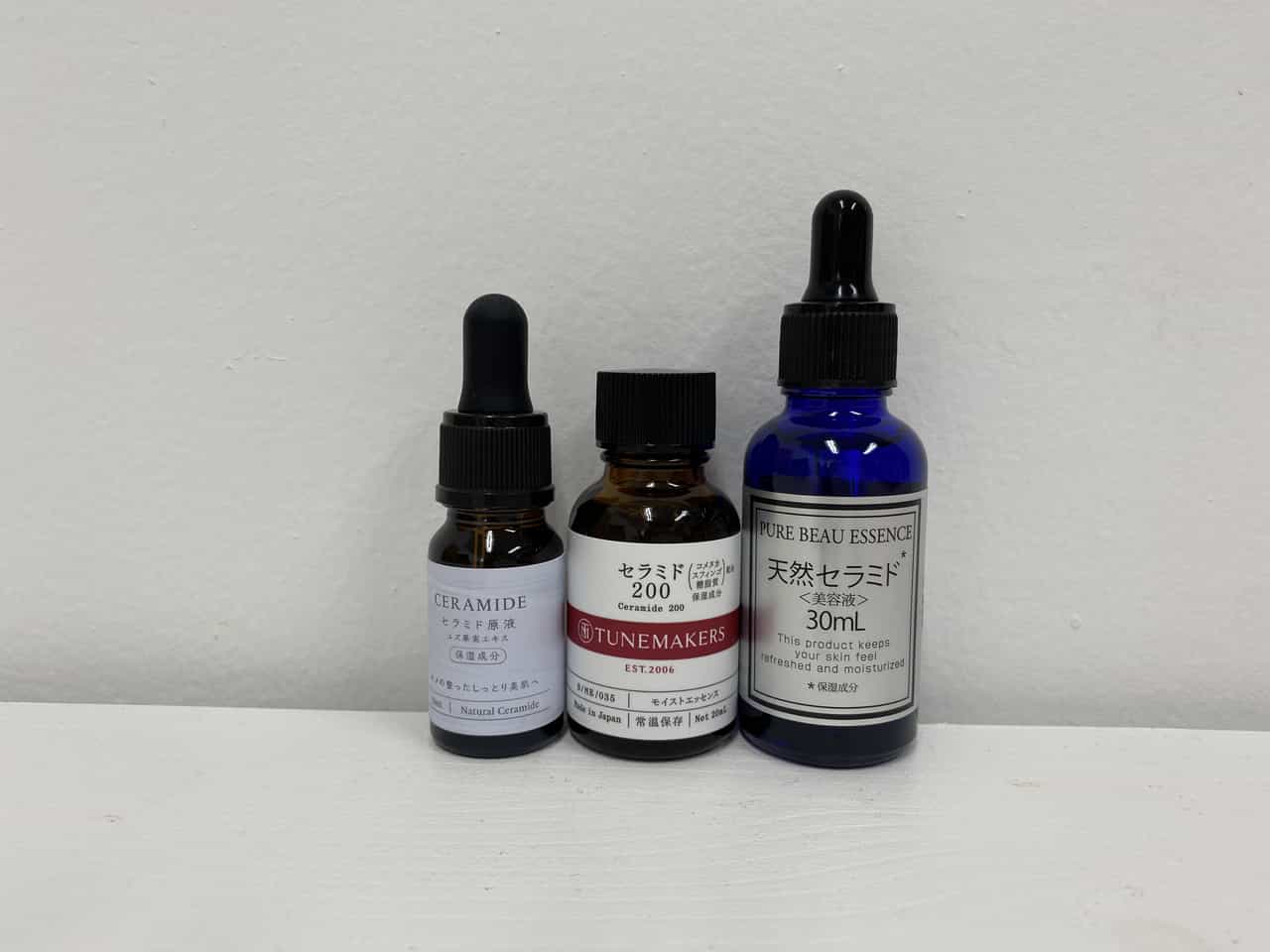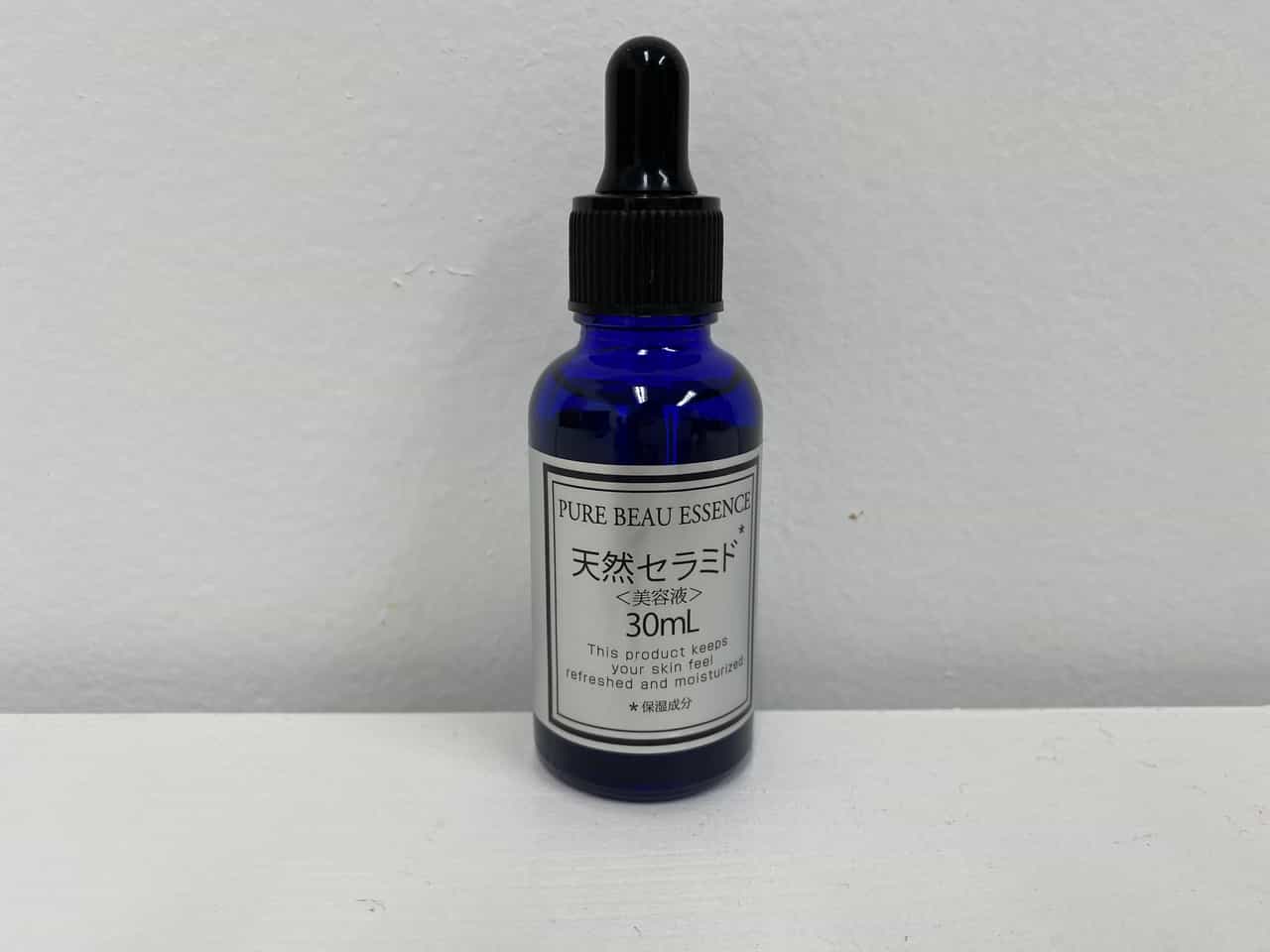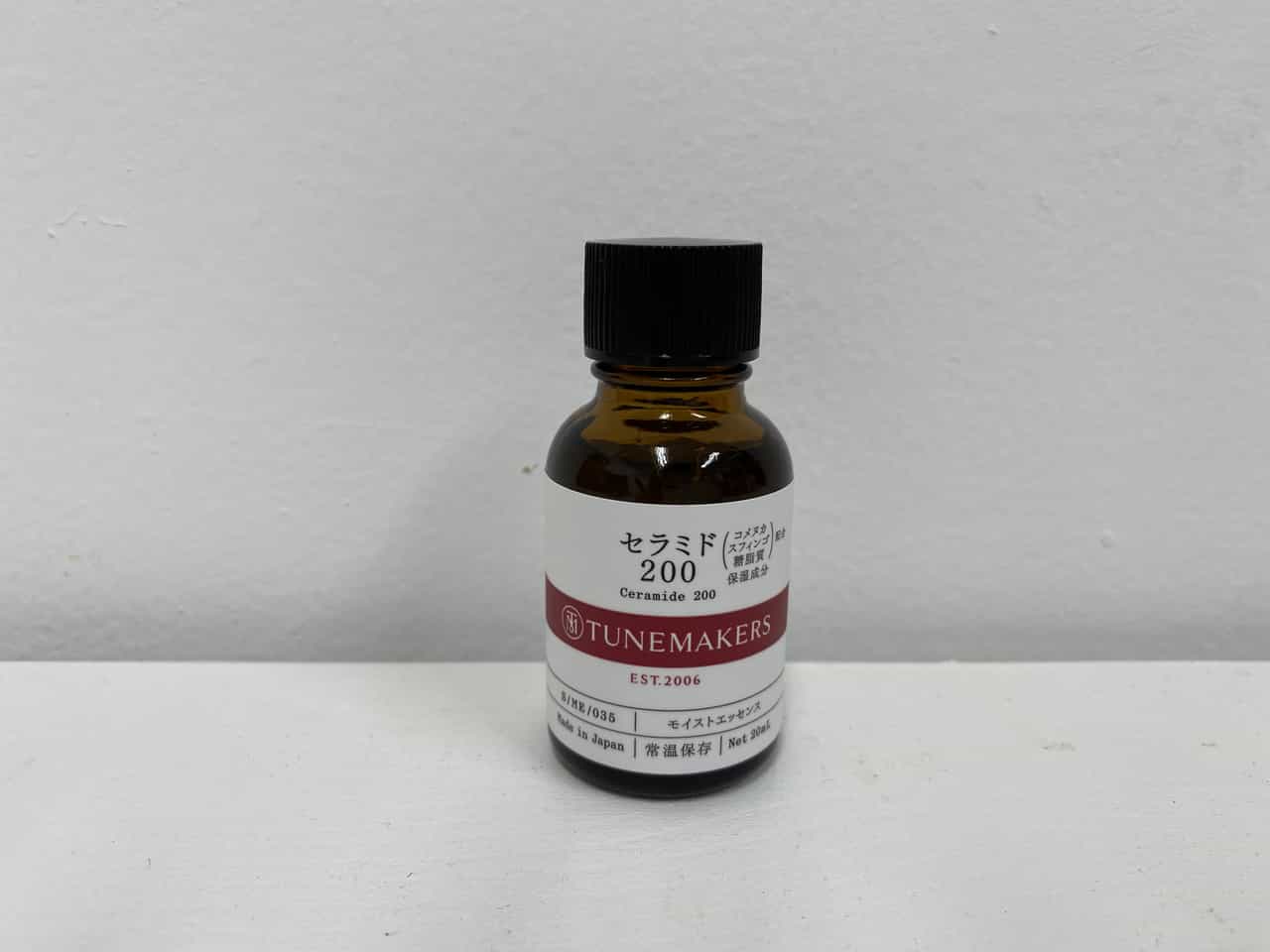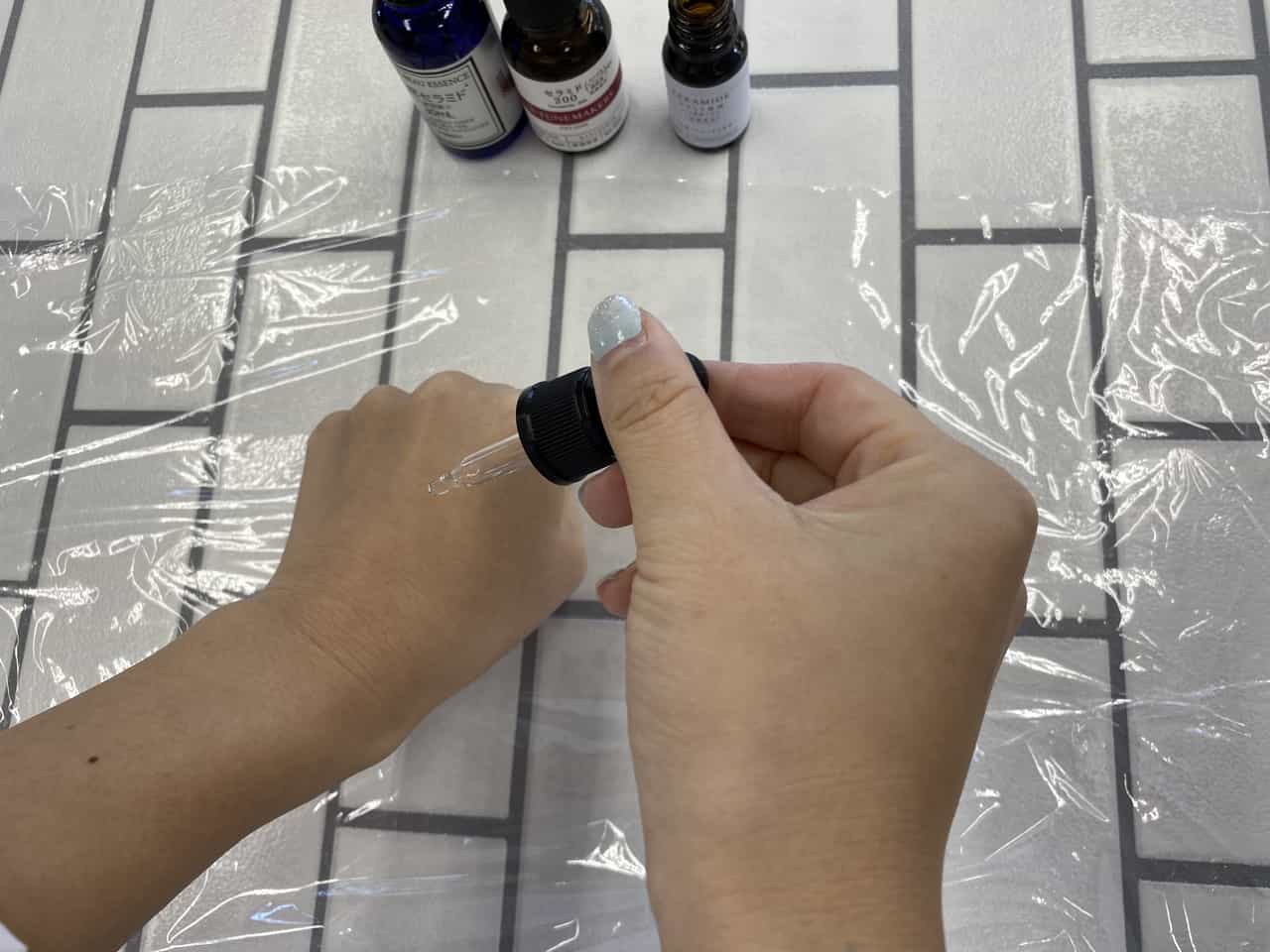皆さんは「セラミド原液」をご存知でしょうか?
この成分には、グルコシルセラミドが含まれており、植物系のセラミドとしてはヒト型セラミドに最も近いタイプです。
そのため高い保湿効果やバリア機能をサポートするはたらきがあります。
肌の角質層までダイレクトに届くので下記の効果が期待されています!
今回はそんな「セラミド原液」のおすすめコスパランキングという事で3種の製品をまとめました!
セラミドの詳細な効果やそれぞれの価格、購入先等の情報も記載していますので、こちら気になる方はぜひ記事をご参考にしてみてください。
それでは早速、記事の本編を見ていきましょう!
そもそもセラミドとは?セラミド原液の効果もご紹介!

セラミドとは?
セラミドとは、肌の細胞間脂質と近いため、保湿力があります。
主にセラミドは馬から抽出され、高い美容効果が期待されます!
セラミドは大まかに4つの種類に分けることができます。
主な種類は下記になっています。
・ヒト型セラミド
・植物性セラミド
・合成セラミド
セラミド原液の効果
セラミド原液とは、化粧品などの前段階の「セラミドエキス」と呼ばれる状態を原液と言います。
セラミド原液の効果は主に以下になっています。
セラミド原液は肌のバリア機能と潤いの維持に欠かすことのできない成分で、肌の表皮に存在する肌を守るために最も重要と言われています。
又、敏感肌の方はセラミドが不足する事が原因であるとも言われており、セラミドは、「使用したあとの変化を実感しやすい」という方が最も多い成分です!
おすすめのセラミド原液3選をランキング形式に比較!

それでは早速、セラミド原液のおすすめコスパランキング3選をご紹介!
第1位:セラミド 原液美容液
セラミド原液のおすすめコスパランキング第1位は「セラミド 原液美容液」です!

乾燥した角質層までしっとりと潤し、キメを整えます。
又、肌の水分を保持し、肌を健やかに保ちます。
その他にも、お肌に優しい8種のフルー処方となっています。
| 製品名 |
セラミド 原液美容液 |
| 容量 | 100ml |
| 価格 | 2,480円 |
| ml単価 | 24.8円 |
| 購入先 | Amazonで購入 |
第2位:JG ピュアビューエッセンス 天然セラミド
セラミド原液のおすすめコスパランキング第2位は「JG ピュアビューエッセンス 天然セラミド」です!

「天然セラミド化粧品材料液」を加工せずそのまま100%使用した贅沢美容液です。
ヒトの肌に存在するセラミドに近いといわれる天然セラミド原液をそのまま使用している美容液となっています。
化粧品材料液を加工せず100%そのまま使用した高濃度美容液。
| 製品名 |
JG ピュアビューエッセンス 天然セラミド |
| 容量 | 25ml |
| 価格 | 732 |
| ml単価 | 29.28 |
| 購入先 | Amazonで購入 |
第3位:セラミド200
セラミド原液のおすすめコスパランキング第2位は「セラミド200」です!

保湿力のある米ヌカ由来の糖セラミドを200%に増量。
さらっとした使用感はそのままに、濃度UP、保湿力UPの高濃度ナノセラミドが角質層へ浸透します。
潤しても乾燥する肌をなめらかに整え、肌の奥から潤いをしっかりキープします。
高濃度でしっかり乾燥ケアしたい方におすすめです。
| 製品名 |
セラミド200 |
| 容量 | 20ml |
| 価格 | 1,980 |
| ml単価 | 99 |
| 購入先 | Amazonで購入 |
セラミド原液の使用方法はこちら

セラミド原液は洗顔後に、化粧水で肌を整えます。
適量を、顔全体に馴染ませます。
重ねて乳液やクリーム等で保湿するとよりセラミド原液の効果を実感することができます。
最後に:セラミド原液で美しい肌を叶えよう
今回の記事いかがでしたでしょうか?
おすすめのセラミド原液3選とセラミドの効果などについてご紹介していきました。
肌質が気になる方は、ぜひご紹介しましたセラミド原液の中から自分に合う製品を見つけてみてはいかがでしょうか!
リンクも張っていますので、ぜひご購入してみてください!
以上、おすすめのセラミド原液についての記事でした。



コメント
The Best Injectable Testosterone: Comparing Propionate, Cypionate, and Enanthate
What is the Best Injectable Testosterone? Choosing Between Propionate vs.
Cypionate vs. Enanthate
The decision between propionate, cypionate,
and enanthate for injectable testosterone can be overwhelming for many individuals seeking treatment for low
testosterone (hypogonadism). Each formulation has
unique characteristics that may make it more suitable for specific scenarios.
Whether you’re looking to boost muscle growth,
improve energy levels, or address age-related declines
in testosterone, understanding the differences between these
esters is crucial for making an informed choice.
Key Takeaways
Testosterone Replacement Therapy (TRT) is a medical intervention used to
address low levels of testosterone, which can lead to a variety of physical and
psychological symptoms. Injectable testosterone comes in different forms,
each with its own benefits and drawbacks.
Understanding Testosterone Replacement Therapy
Testosterone Replacement Therapy (TRT) is designed to supplement the
body’s natural testosterone production when it
falls below normal levels. This can be due to aging, medical
conditions, or other factors that impair testosterone synthesis
or release. TRT is typically administered via injection,
patch, or gel, but injectable forms are
often preferred for their consistency and effectiveness.
Types of Testosterone Injections
Injectable testosterone comes in various forms, with propionate,
cypionate, and enanthate being among the most commonly used.
Each ester has a different half-life and pharmacokinetic profile, which impacts
how often injections need to be administered and their overall effectiveness.
Propionate vs. Cypionate vs. Enanthate: How to Make the Right Selection
When choosing between propionate, cypionate, and enanthate,
consider factors like your lifestyle, injection frequency preferences, and the desired outcomes of your treatment.
Propionate has a shorter half-life (2-3 days), requiring more
frequent injections but offering rapid testosterone release.
Cypionate has a longer half-life (6-8 days) and is often preferred for its consistent
delivery. Enanthate, with a half-life of 8-12 days, provides
slower, sustained testosterone release.
Individuals with high demands for testosterone may prefer propionate due
to its rapid effects, while athletes or those looking for prolonged
efficacy might opt for enanthate or cypionate. It’s also important
to consult with your healthcare provider to determine which ester is most
appropriate based on your specific needs and medical history.
How to Administer Testosterone Injections
Administering testosterone injections properly is essential for safety and effectiveness.
The injection site should be clean, and sterile equipment must be used each time.
Common sites include the buttocks, thighs, or arms.
Always follow your healthcare provider’s instructions regarding injection technique and frequency.
Monitoring and Dosage Considerations
Regular blood tests are necessary to monitor testosterone
levels, ensure they remain within therapeutic range, and
avoid potential side effects. Your dosage may need adjustment based on these results and any changes in your health status.
Always adhere to your healthcare provider’s recommendations
regarding dosage adjustments.
Potential Benefits of Testosterone Injections
Testosterone injections can offer a range of benefits, including improved muscle mass,
enhanced energy levels, better cognitive function, and enhanced
libido. They can also help address symptoms of low testosterone, such as fatigue, depression, and memory loss.
Improving Symptoms of Low Testosterone
Individuals with hypogonadism may experience a variety of symptoms, including muscle weakness, fatigue,
reduced bone density, and emotional instability. Injectable testosterone can help alleviate these symptoms
by replenishing testosterone levels and restoring normal bodily functions.
Psychological and Physical Health Improvements
Testosterone plays a crucial role in both physical health
and psychological well-being. Adequate levels of testosterone are essential for maintaining muscle mass, bone health, energy levels,
and sexual function. Injectable testosterone can help individuals
regain control over their health and improve
their overall quality of life.
Risks and Side Effects
While injectable testosterone can be highly effective, it is not without risks.
Common side effects include acne, hair loss, and changes in cholesterol levels.
Long-term use has been associated with potential health risks, such
as cardiovascular issues and liver damage.
It’s important to weigh the benefits and risks carefully before starting TRT.
Common Side Effects of Testosterone Therapy
Side effects of testosterone therapy can vary depending on the ester used
and the individual’s response. Common side effects include acne,
oily skin, hair loss, and mood changes. More serious
side effects may include cardiovascular complications, liver damage, and increased risk of certain cancers.
Long-Term Health Risks
While injectable testosterone can provide significant benefits
for individuals with low testosterone levels, long-term use has been linked to potential
health risks. Studies have shown that prolonged TRT may increase the risk of cardiovascular events, such as
heart attacks or strokes, and may also affect liver function. It’s essential to discuss these
risks with your healthcare provider before starting treatment.
Managing Side Effects and Risks
Many side effects of testosterone therapy can be managed through lifestyle adjustments, such as maintaining a healthy diet, exercising regularly, and avoiding smoking
and excessive alcohol consumption. Regular monitoring is
crucial to identify and address any emerging health issues promptly.
Considerations for Specific Populations
Injectable testosterone may have different implications for athletes versus general healthcare users.
Athletes often prefer shorter-acting esters
like propionate due to its rapid effectiveness, while others may opt for longer-acting esters for sustained benefits.
It’s important to consider your personal goals and preferences when choosing a treatment option.
Effects on Fertility and Reproduction
Injectable testosterone can impact fertility
and reproduction in both males and females. In men, high levels of testosterone may suppress sperm production and
fertility, while in women, it can lead to irregular menstrual cycles
and potential infertility. Discuss the reproductive implications with
your healthcare provider before starting TRT.
Aftercare and Follow-Up
After starting testosterone injections, it’s crucial to follow a regular schedule of follow-up appointments and
blood tests to monitor your progress and adjust
your treatment as needed. This ensures that your testosterone levels remain within the therapeutic range while minimizing
the risk of side effects.
Routine Monitoring after Testosterone Injections
Regular monitoring is essential for ensuring the
safety and effectiveness of testosterone therapy. Blood tests to measure testosterone levels, cholesterol, and liver function should be conducted at least every three months.
This helps in making timely adjustments to your treatment plan.
Lifestyle Adjustments and Supportive Therapies
While injectable testosterone can provide significant benefits, it works best when combined with lifestyle changes such
as a balanced diet, regular exercise, and stress management techniques.
These adjustments can enhance the effectiveness of TRT and reduce the likelihood of side effects.
Frequently Asked Questions
1. How often do I need to inject testosterone?
This depends on the ester used. Propionate typically requires
daily or every other day injections, while cypionate and enanthate require weekly injections.
2. What are the potential side effects of testosterone therapy?
Common side effects include acne, hair loss, mood changes, and increases in cholesterol levels.
More serious risks involve cardiovascular and liver issues.
3. How long should I wait before seeing improvements?
Improvements in muscle mass and energy levels may be noticed within a few weeks, while more significant changes may take several months of
consistent therapy.
4. Is injectable testosterone safe for long-term use?
Long-term use has been associated with health risks, including cardiovascular complications and liver damage.
Always consult your healthcare provider before considering prolonged treatment.
5. Can I stop testosterone injections on my own?
Never discontinue TRT abruptly without consulting your healthcare provider, as this can lead to severe withdrawal symptoms
or a sudden drop in testosterone levels.
Feel free to visit my homepage: androgenic Drugs